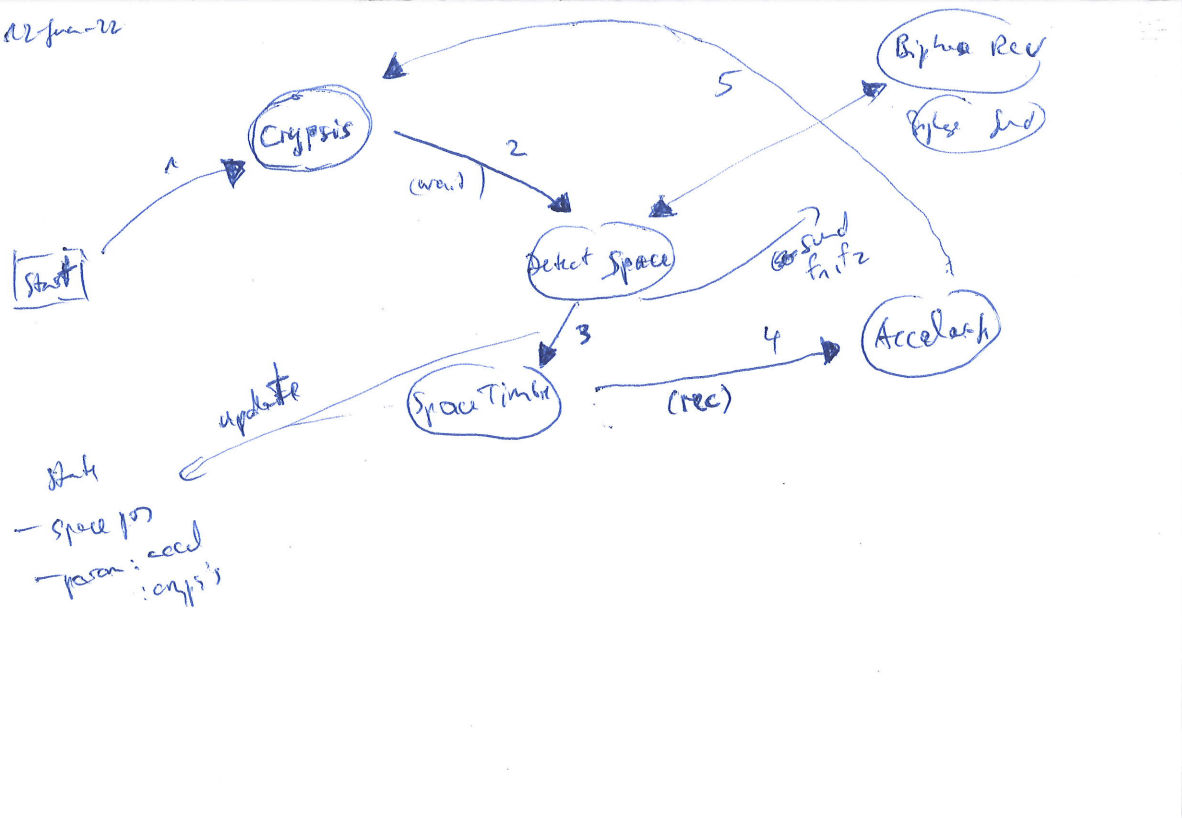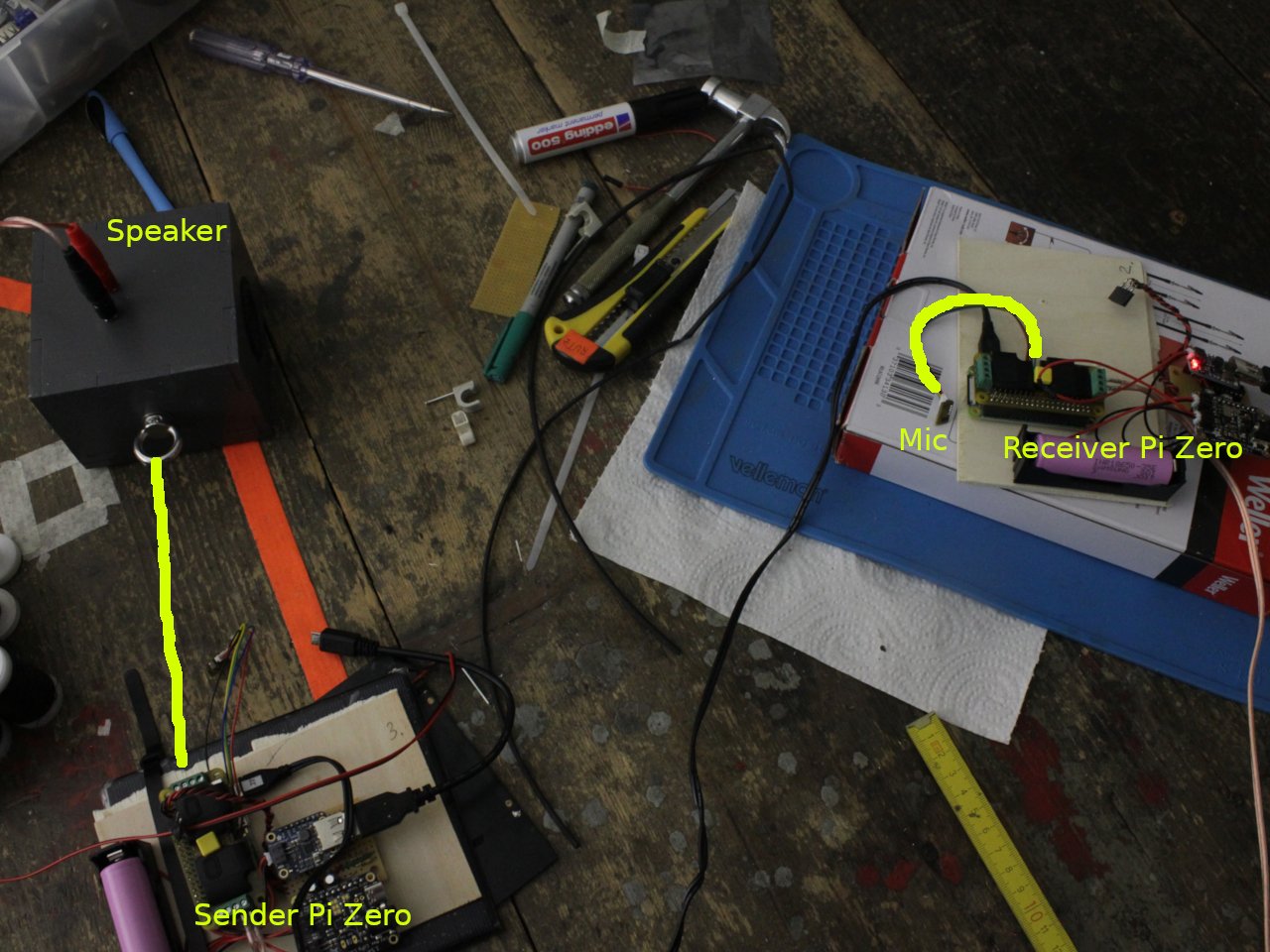About Tagfalter
Tagfalter is German for a day-active butterfly (where Nachtfalter would be the night-active moth), indicating an inspiration from the realm of insects. Falten is not only ’to fold’, as in the flapping of the butterfly’s wings, but also the technical term for ‘convolution’, a digital signal process that is applied repeatedly in the piece. Each of the five nodes enacts a cycle of different modes, usually following the order of ‘crypsis’, ‘detect-space’, ‘space-timbre’, and ‘accelerate’, interspersed with random occurrences of ‘silence’ and ‘joy’.

Crypsis is the ability of an organism to avoid observation or detection by other organisms. In this mode, you can perceive a sort of breathing, which alternates between obtaining sound information from the microphone, and reproducing a “temporally blurred” version of this information as an audible signal, which thus hides within the existing spectral articulation of the space, playing with the distinction of foreground and background.
Detect-space issues a series of so-called sweeps, chirpy sounds lasting a few seconds that move from lower to higher frequencies. By observing the echoes of this sound, the node creates an internal image of the (geometrical) space around it, translated into distances of reflecting surfaces. This image subsequently informs the parameters of all other modes, most perceivable in space-timbre which translates these distances into frequencies, creating an internally modulated harmonic or inharmonic sphere. When multiple nodes happen to be in the space-timbre mode at the same time, one can easily notice the different harmonic spheres obtained from the individual locations of the nodes.

The nodes are meant to communicate among each other using a simple technique called frequency-keying. A pair of frequencies understood by all nodes is used by a node to inform the others that it is about to run its space detection, and to communicate its identity (another pair of frequencies) resulting from the detected space. Then using these individual frequencies, sometimes bursts of joy can be heard, as a similar sounding communication signal, but at these distinct frequencies. If another node notices this, it will reply with its own burst.
Soon after a node is woken up by the sun, it begins to gather a “high speed image” of its acoustical surroundings, eventually heard as the mode accelerate. Here, the high speed image is reproduced, yielding much higher frequencies and faster tempo than the original scene, using a factor of thirty to sixty. As a result, very low frequencies and slow rhythms of the environment, such as accelerating and decelerating motors of cars, can be heard as strange chirps. Loud impulses become clicks. Often very low frequency wind noises can be heard, sounding more like crinkling paper. Even though one might identity “voices” or “birds” in the acceleration mode, these sounds have vastly different origins, in fact the mode is made so that no human voices could be recorded, avoiding any sort of surveillance of the passers-by.

The process of composing this piece is documented on the Research Catalogue platform. Research Catalogue dokumentiert.

Link to the GitLab repository
Get the code: https://gitlab.mur.at/pirro/klangnetze/-/tree/main/tagfalter